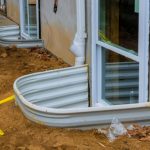What to Know About Pouring Concrete in Hot Weather
Are you planning on doing some concrete work this summer? It’s the best time of year to do it, as the curing times are lower when the weather is warm. However, once we get to an inevitable stretch of hot and humid days in July or August, there are still going to be some challenges that you have to overcome thanks to the elevated moisture content in the air.
Here’s some information to keep in mind about pouring concrete in hot and humid weather, courtesy of an experienced concrete contractor in Racine, WI.
Dealing with heat and humidity when pouring concrete
A moderate level of heat is actually helpful when you’re pouring concrete. Warm weather can cut down on curing times and help you get more accomplished more quickly. However, when you get over 90 degrees or start dealing with more humid temperatures, then some challenges come into play, and you’ll have to adjust the installation methods you use and the mix of concrete you develop.
When temperatures get extremely hot, the setting time of ready-mix concrete can speed up. Concrete that sets too fast becomes rather difficult to manage, even if you have multiple people working on a job. You want to avoid the mix getting hard before the surface is properly smoothed out in its entirety, otherwise you’ll end up with an uneven finished concrete surface. This is an issue for all types of concrete structures, including vertical structures like walls as well as horizontal structures like floors and pavement.
In addition, there are potential issues with the strength to consider when dealing with concrete in warm weather. The moisture in the mixture may start to evaporate at hot temperatures, so if you don’t keep up with re-moistening the slab while you’re working on it, it’s much more likely you’ll have to deal with cracks and chips in the finished product, because it will have become brittle while setting. Meanwhile, if you’re dealing with particularly humid weather, you might have the opposite problem—the elevated moisture content in the air makes it difficult for the concrete to cure in an efficient manner.
All of this means you really need to thoroughly plan out the way you mix and pour your concrete when the weather gets hot and humid. Be sure to keep an eye on the forecast for the days on which you anticipate you’ll be pouring concrete, and adjust accordingly. You might need to change up the mixture, or the methods you use for pouring. If you need to, you can turn on sprinklers nearby on a “spray” setting to keep the concrete moist, or occasionally spray the slab with a hose during the course of the day. You can also plan for longer curing times by getting started earlier on days when the humidity in the air hits high levels.
For more information about how you can deal with pouring concrete in the summer, reach out to Langenfeld Masonry & Concrete to speak with a concrete contractor in Racine, WI.
More...
Categorised in: Concrete Contractor




